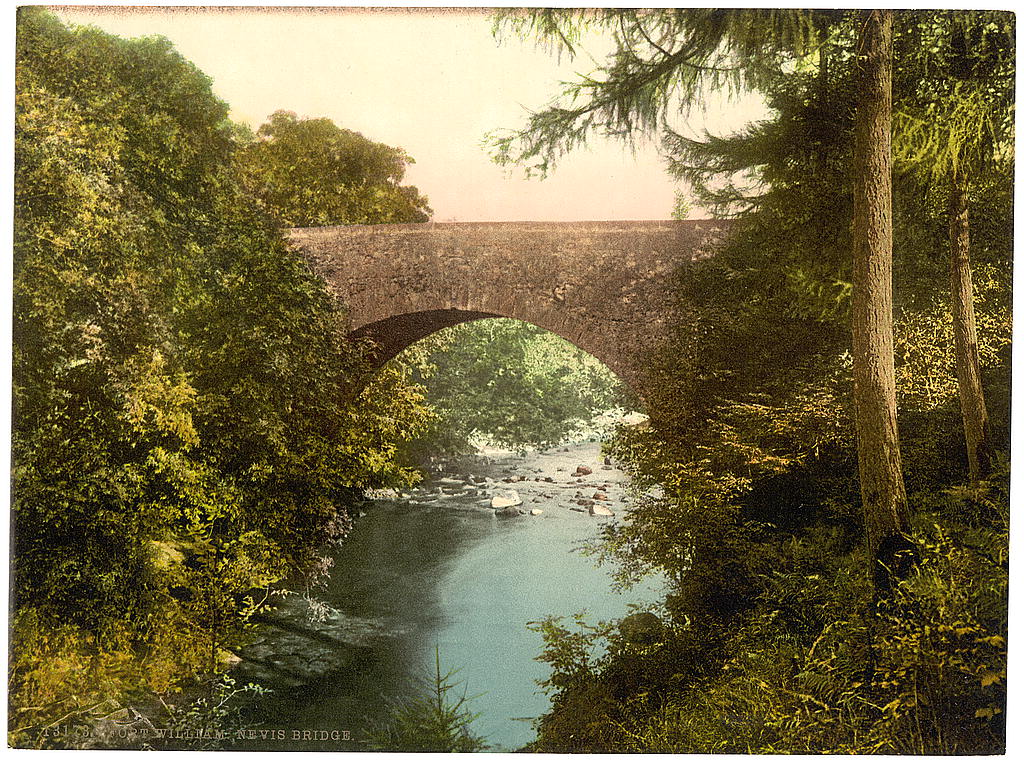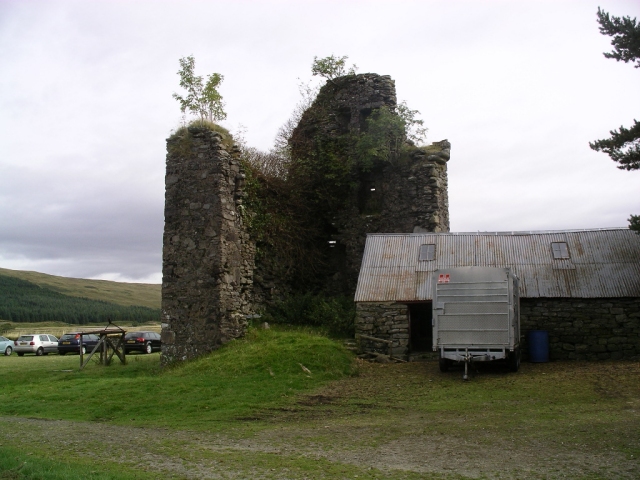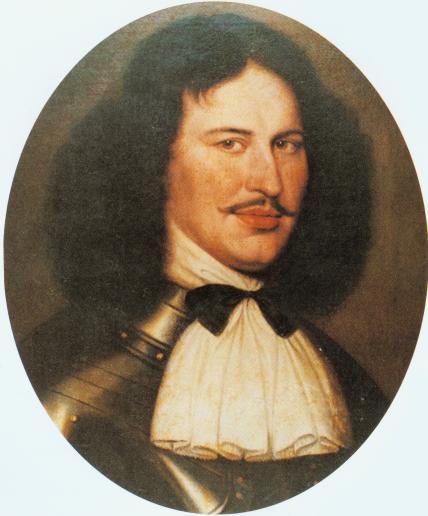|
Coll Macdonald, 16th Of Keppoch
Coll Macdonald, 16th of Keppoch (c.1664-1729), was a Scottish clan chief and prominent Jacobite, active in both the 1715 Jacobite rebellion and Dundee's rising of 1689. He was chief of the Macdonalds of Keppoch, holding land in Lochaber. He is sometimes known as "Coll of the Cows" (Nam-bo) or "the Colonel of the Cows", a nickname apparently given by John Graham, 1st Viscount Dundee. Along with other chiefs of Keppoch he was also referred to by the Gaelic patronymic title ''Mac Mhic Raonuill'', "the son of Ranald's son". Life Keppoch was the son of the 15th chief Archibald (Gilleasbuig) Macdonald and Mary Macmartin of the Macmartin Camerons. The anti-Jacobite Whig historian Thomas Babington Macaulay mentioned Keppoch in his ''History of England'', describing him as "an excellent specimen of the genuine Highland Jacobite ..insulting and resisting the authority of the crown".Macaulay, ''History of England from the Accession of James II'' Keppoch first appears in records in 16 ... [...More Info...] [...Related Items...] OR: [Wikipedia] [Google] [Baidu] |
Scottish Clan Chief
The Scottish Gaelic word means children. In early times, and possibly even today, Scottish clan members believed themselves to descend from a common ancestor, the founder of the clan, after whom the clan is named. The clan chief (''ceannard cinnidh'') is the representative of this founder, and represents the clan. In the Scottish clan system, a chief is greater than a chieftain (''ceann-cinnidh''), a designation applied to heads of branches of a clan.Adam; Innes of Learney (1970), pp. 154–155. Scottish clans that no longer have a clan chief are referred to as armigerous clans. Functions of the clan chief Historically the principal function of the chief was to lead the clan in battle on land and sea. The chief and the chieftain were at one time in the Scottish Highlands influential political characters, who wielded a large and often arbitrary authority.''Maclean of Ardgour v. Maclean'', p. 636 However, none of this authority now remains. Highland chiefship or chieftainship i ... [...More Info...] [...Related Items...] OR: [Wikipedia] [Google] [Baidu] |
Fort William, Highland
Fort William ( gd, An Gearasdan ; "The Garrison") formerly ( gd, Baile Mairi) and ( gd, Gearasdan dubh Inbhir-Lochaidh) (Lit. "The Black Garrison of Inverlochy"), ( sco, The Fort), formerly ( sco, Maryburgh) is a town in Lochaber in the Scottish Highlands, located on the eastern shore of Loch Linnhe. At the 2011 census, Fort William had a population of 10,459, making it the second largest settlement in both the Highland council area, and the whole of the Scottish Highlands; only the city of Inverness has a larger population. Fort William is a major tourist centre on the Road to the Isles, with Glen Coe just to the south, to the east, and Glenfinnan to the west. It is a centre for hillwalking and climbing due to its proximity to Ben Nevis and many other Munro mountains. It is also known for its nearby downhill mountain bike track. It is the start/end of both the West Highland Way (Milngavie – Fort William) and the Great Glen Way (a walk/cycle way Fort William–Inverness). ... [...More Info...] [...Related Items...] OR: [Wikipedia] [Google] [Baidu] |
South Uist
South Uist ( gd, Uibhist a Deas, ; sco, Sooth Uist) is the second-largest island of the Outer Hebrides in Scotland. At the 2011 census, it had a usually resident population of 1,754: a decrease of 64 since 2001. The island, in common with the rest of the Hebrides, is one of the last remaining strongholds of the Gaelic language in Scotland. South Uist's inhabitants are known in Gaelic as ''Deasaich'' (Southerners). The population is about 90% Roman Catholic. The island is home to a nature reserve and a number of sites of archaeological interest, including the only location in the British Isles where prehistoric mummies have been found. In the northwest, there is a missile testing range. In 2006 South Uist, together with neighbouring Benbecula and Eriskay, was involved in Scotland's biggest-ever community land buyout by Stòras Uibhist. The group also owns the "biggest community wind farm in Scotland", Lochcarnan, on South Uist which opened in 2013. Geology In common with th ... [...More Info...] [...Related Items...] OR: [Wikipedia] [Google] [Baidu] |
John Campbell, 1st Earl Of Breadalbane And Holland
John is a common English name and surname: * John (given name) * John (surname) John may also refer to: New Testament Works * Gospel of John, a title often shortened to John * First Epistle of John, often shortened to 1 John * Second Epistle of John, often shortened to 2 John * Third Epistle of John, often shortened to 3 John People * John the Baptist (died c. AD 30), regarded as a prophet and the forerunner of Jesus Christ * John the Apostle (lived c. AD 30), one of the twelve apostles of Jesus * John the Evangelist, assigned author of the Fourth Gospel, once identified with the Apostle * John of Patmos, also known as John the Divine or John the Revelator, the author of the Book of Revelation, once identified with the Apostle * John the Presbyter, a figure either identified with or distinguished from the Apostle, the Evangelist and John of Patmos Other people with the given name Religious figures * John, father of Andrew the Apostle and Saint Peter * Pope Joh ... [...More Info...] [...Related Items...] OR: [Wikipedia] [Google] [Baidu] |
Robert Campbell Of Glenlyon
Robert Campbell, 5th Laird of Glenlyon (1630 – 2 August 1696), was a minor member of Scottish nobility and is best known as one of the commanding officers at the Massacre of Glencoe. Life Robert was the second son of Archibald Campbell, fier of Glenlyon (eldest son of Duncan Campbell, 4th of Glenlyon), and his wife Jean, daughter of Sir Robert Campbell (1575–1657), 3rd Baronet and 9th Laird of Glenorchy. He inherited Meggernie Castle, in Glenlyon, from his father and set about improving it in line with current fashions. He roofed it with slates instead of thatch, he enlarged it very substantially and in the process created one of the stately homes of Perthshire. This, along with heavy drinking, gambling and a string of unwise investments, pushed him to the brink of bankruptcy. Though he borrowed from his friends, his relatives and his tenants, he still could not meet his debts. In a last effort to clear his debts, he sold all the woods of Glenlyon which were part of t ... [...More Info...] [...Related Items...] OR: [Wikipedia] [Google] [Baidu] |
Massacre Of Glencoe
The Massacre of Glencoe ( gd, Murt Ghlinne Comhann) took place in Glen Coe in the Highlands of Scotland on 13 February 1692. An estimated 30 members and associates of Clan MacDonald of Glencoe were killed by Scottish government forces, allegedly for failing to pledge allegiance to the new monarchs, William III and Mary II. Although the Jacobite rising of 1689 was no longer a serious threat by May 1690, unrest continued in the remote Highlands which consumed military resources the government needed for the Nine Years' War in Flanders. In late 1690, the Scottish government agreed to pay the Jacobite clan chiefs a total of £12,000 in return for swearing an oath of loyalty to William and Mary; however, disagreements over how to divide the money meant by December 1691 none of them had taken the oath. Under pressure from William, Secretary of State Lord Stair decided to make an example as a warning of the consequences for further delay. The Glencoe MacDonalds were not the only ... [...More Info...] [...Related Items...] OR: [Wikipedia] [Google] [Baidu] |
Rothiemurchus
Rothiemurchus Forest is a remnant of the Caledonian Forest at near Aviemore, Inverness-shire, Scotland. It is in the Highland region. The forest is popular for recreation and contains important independent wildlife, including the osprey, Scottish crossbill, capercaillie, crested tit and European wildcat. Stretching from the River Spey to the high mountain plateau, Rothiemurchus sits within the Cairngorms National Park. Much of the forest is within the Rothiemurchus Estate, in the ownership of the Grant family since the 1540s. The estate is now owned and managed by Johnnie Grant, 13th Earl of Dysart and 17th Laird of Rothiemurchus, along with his family. The land was also managed by Philippa Grant, Countess of Dysart till September 2022, when she was killed in a road traffic collision. In 2014, Rothiemurchus Upper Forest - covering - was sold to Forestry Commission Scotland (now Forestry and Land Scotland Forestry and Land Scotland (FLS) ( gd, Coilltearachd agus Fearann Alb ... [...More Info...] [...Related Items...] OR: [Wikipedia] [Google] [Baidu] |
Battle Of Cromdale
The Battle of Cromdale took place at the Haughs of Cromdale on 30 April and 1 May 1690. The site is on a hillside near the village of Cromdale, then in Inverness-shire and now in the Highland council area. The battlefield has been included in the Inventory of Historic Battlefields in Scotland and protected by Historic Scotland under the Scottish Historical Environment Policy of 2009. Background After their defeat at the Battle of Dunkeld in 1689, the Highland clans had returned to their homes in low spirits. Sir Ewen Cameron assumed control over the army's remnant. Sir Ewen and the other Jacobite chiefs complained to King James over the precarious state of his support in Scotland and the necessity of sending them aid. James was occupied with preparations for resisting a threatened invasion of Ireland. To aid his supporters in Scotland, James sent clothing, arms, ammunition and provisions. He also directed a few officers from Ireland to Lochaber, among whom was Major-General ... [...More Info...] [...Related Items...] OR: [Wikipedia] [Google] [Baidu] |
Battle Of Killiecrankie
The Battle of Killiecrankie ( gd, Blàr Choille Chnagaidh), also referred to as the Battle of Rinrory, took place on 27 July 1689 during the 1689 Scottish Jacobite rising. An outnumbered Jacobite force under John Graham, Viscount Dundee and Sir Ewen Cameron of Lochiel defeated a government army commanded by General Hugh Mackay. James VII went into exile in December 1688 after being deposed by the Glorious Revolution in Scotland. In March 1689, he began the Williamite War in Ireland, with a simultaneous revolt led by Dundee, previously military commander in Scotland. Hampered by lack of men and resources, Dundee gambled on a decisive battle which he hoped would attract wider support. Although Killiecrankie was an unexpected and stunning victory, his army suffered heavy casualties and he was killed in the final minutes. It did little to change the overall strategic position, and the Jacobites were unable to take advantage of their success. Background In February 1685, the Ca ... [...More Info...] [...Related Items...] OR: [Wikipedia] [Google] [Baidu] |
Ewen Cameron Of Lochiel
Sir Ewen Cameron of Lochiel (Scottish Gaelic: ''Eòghain Camshròn Mac Dhòmhnaill Dubh''; February 1629 – 12 June 1719) was a Scottish highland chief, soldier and courtier. He was the Chief of Clan Cameron – the 17th Lochiel, and was renowned for his role in the Wars of the Three Kingdoms (1650–1654) as a Cavalier and in the 1689 Jacobite Rebellion. Lord Macaulay described Sir Ewen as the 'Ulysses of the Highlands", being a man of enormous strength and size; indeed, he is regarded as one of the most formidable Scottish chiefs of all time. An incident showing his strength and ferocity in single combat, when he bit out the throat of an enemy is used by Sir Walter Scott in ''Lady of the Lake'' (canto v.). In 1680 he was said to have killed the last wolf in Scotland. Early years Ewen Cameron of Lochiel was born in 1629 at Kilchurn Castle, the eldest son of John Cameron and Margaret Campbell of Glenorchy. He was the grandson of Allan Cameron of Lochiel, 16th Chief (c. ... [...More Info...] [...Related Items...] OR: [Wikipedia] [Google] [Baidu] |
Inverness
Inverness (; from the gd, Inbhir Nis , meaning "Mouth of the River Ness"; sco, Innerness) is a city in the Scottish Highlands. It is the administrative centre for The Highland Council and is regarded as the capital of the Highlands. Historically it served as the county town of the county of Inverness-shire. Inverness lies near two important battle sites: the 11th-century battle of Blàr nam Fèinne against Norway which took place on the Aird, and the 18th century Battle of Culloden which took place on Culloden Moor. It is the northernmost city in the United Kingdom and lies within the Great Glen (Gleann Mòr) at its northeastern extremity where the River Ness enters the Beauly Firth. At the latest, a settlement was established by the 6th century with the first royal charter being granted by Dabíd mac Maíl Choluim (King David I) in the 12th century. Inverness and Inverness-shire are closely linked to various influential clans, including Clan Mackintosh, Clan Fraser and Cl ... [...More Info...] [...Related Items...] OR: [Wikipedia] [Google] [Baidu] |
.jpg)



.jpg)

